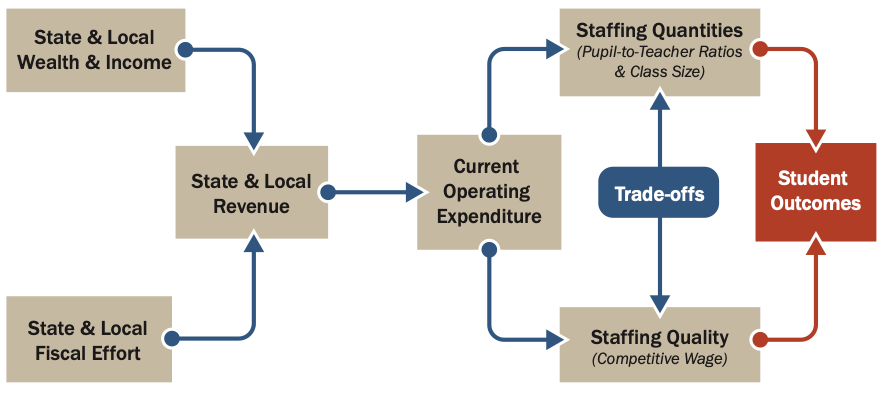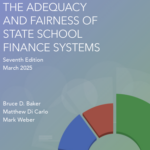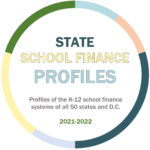About the project
Over the past decade, there has been emerging political consensus regarding state school finance systems, money, and schools, supported by a growing body of high-quality empirical research regarding the importance of equitable and adequate financing for providing high quality schooling to all children.
There is, of course, serious and often contentious debate about how education funding should be spent, but virtually all potentially effective policies and approaches require investment, often substantial investment. The idea that “money doesn’t matter” is no longer defensible.

However, school finance systems, and their measurement, are highly complex, and often difficult to understand for policymakers, parents, and the general public. Acting on the empirical and political consensus about the importance of school funding therefore requires data and measures that are accessible and widely accepted as credible.
This need is the impetus for the School Finance Indicators Database, a collection of sophisticated school finance measures that can be used to assess the adequacy and fairness of state and district revenue, spending, and resource allocation, and to compare these measures between states and over time. The database is designed for use not only by researchers, but also by parents, policymakers, journalists, and the general public.
In building and presenting this system, we rely on the following core principles:
- Proper funding is a necessary condition for educational success: Competitive educational outcomes require adequate resources, and improving educational outcomes requires additional resources.
- The cost of providing a given level of educational quality varies by context: Equal educational opportunity requires progressive distribution of resources, targeted at students and schools that need them most.
- The adequacy and fairness of education funding are largely a result of legislative policy choices: Good school finance policy can improve student outcomes, whereas bad policy can hinder those outcomes.
The primary products of the system are the State Indicators Database, a collection of 125 state-by-state school finance measures, most of which are available for all years between 1993 and 2022, and the District Cost Database, a dataset of spending adequacy in over 12,000 K-12 public school districts. Both of these datasets are updated annually and freely available to the public.
In addition to an annual report presenting findings from key indicators from the state database and individual profiles summarizing each state’s finance system, we also publish regular research briefs and data visualizations examining different measures in the system. It is our hope and intention that our data, and analyses based on these data, will help to improve school finance debates and policymaking in the U.S.
This project has been supported in the past by grants from the W.T. Grant Foundation and the Bill & Melinda Gates Foundation.
Latest News
 UPDATED ANNUAL REPORT, PROFILES, AND DATASETS AVAILABLE
UPDATED ANNUAL REPORT, PROFILES, AND DATASETS AVAILABLE
March 2025: Read the seventh edition of our annual report, view your state’s one-page finance profile, use our data visualizations, or download the full state- and district-level dataset.
Latest Annual Report
 The Adequacy and Fairness of State School Finance Systems (7th edition)
The Adequacy and Fairness of State School Finance Systems (7th edition)
The seventh edition of our annual report presenting findings on effort, statewide adequacy, and equal opportunity in state school finance systems. Published March 2025.
Latest Research Briefs
 State School Finance System Profiles (2021-22 school year)
State School Finance System Profiles (2021-22 school year)
One-page profiles summarizing the key results on effort, statewide adequacy, and equal opportunity for all 50 states and D.C. View your state’s profile. Published March 2025.




